





Portions of Detroit went from active neighborhoods to empty lots and abandoned houses. by Theresa Welsh |
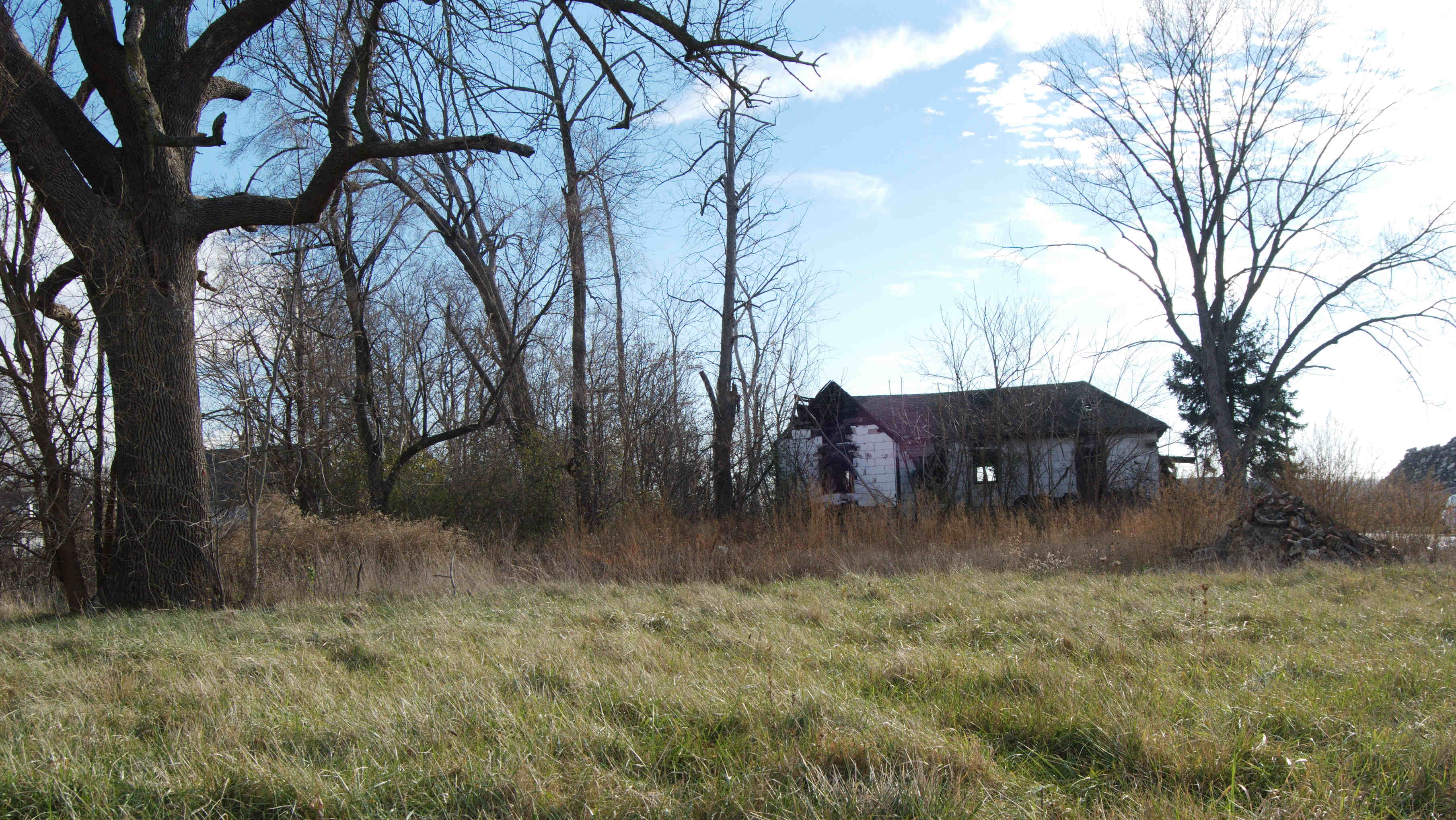 |
A Nice Place to LiveDetroit, founded in 1701, had a population of almost two million people in the 1950s. It was (and is) home to the American auto industry which, over the years of the 20th century, provided thousands of good-paying jobs. Detroit's factories built airplanes and vital equipment during World War II. In the years that followed, as the auto industry prospered, families filled city neighborhoods, enjoying excellent schools, beautiful parks and recreation centers, good shopping along main thoroughfares, churches of all denominations and architectural types and, of course, the waterfront and Belle Isle, all elements that made it a nice place to live. 1967 Riot and Depopulation
Depopulation is a major reason there are so many abandoned homes. As people move out, there is no one to take their place and houses become surplus. Many home owners simply walk away from their homes, unable to sell them and not wanting to continue living on a street full of trashed houses and/or empty lots. Most end up lost to tax foreclosure and go on the city's rolls as another city-owned abandoned house. In 2013, the federal government made available to the state of Michigan a grant for $100 million to be used to clean up blighted property, with Detroit getting a big chunk of that money. Detroit's then Mayor Dave Bing planned to demolish 10,000 abandoned houses by the end of 2013. New Mayor, New Ideas
Duggan believed there were people who would want to live in the city, in a house they could buy cheaply — very cheaply. First, he needed to obtain the legal ability to seize houses quickly after abandonment, before the vandals could trash them. Then he needed to find the people who would live in those still-useful (and sometimes beautiful!) houses. Selling these empty houses at a low price would provide much greater returns then letting them go to strippers and vandals, then burdening the city with the cost of demolishing them. He also planned a program to let people buy any vacant lots adjacent to their own lot for little money and no bureaucratic red tape. Duggan put a new team in place and the city administration began working on ways to bring population back to the city. Detroit exited bankruptcy in late 2014 and, with the Emergency Manager finally gone, the Duggan adminstration has been working hard to get the city back to prosperity. Many houses and other buildings have been torn down. The city is strewn with empty land, but vacant houses still mar many streets. Removal of dangerous buildings and improvements in city services has given many residents new hope that the city can come back. More Detroit residents are participating in city programs (and paying their taxes) to heal their neighborhoods. BUY A HOUSE IN DETROIT Want to buy an abandoned house in Detroit? Check out the city's website with listings and photos of city-owned houses you can buy at bargain prices. These houses need work, and there are requirements for fixing them up and having them occupied, but these auctions represent opportunity for those who see their real value as beautiful homes. Amazing Sights!
It is already changing as derelict structures fall to the wrecking ball. There is evidnce that people actually ARE moving into the city and actually ARE buying abandoned buildings to rehab to live in or to open a business. In urban decay, some see opportunity. A new chapter begins in Detroit's history. |
PHOTOS | ||
|
These photos show some of the homes in the city that no longer have residents. | ||
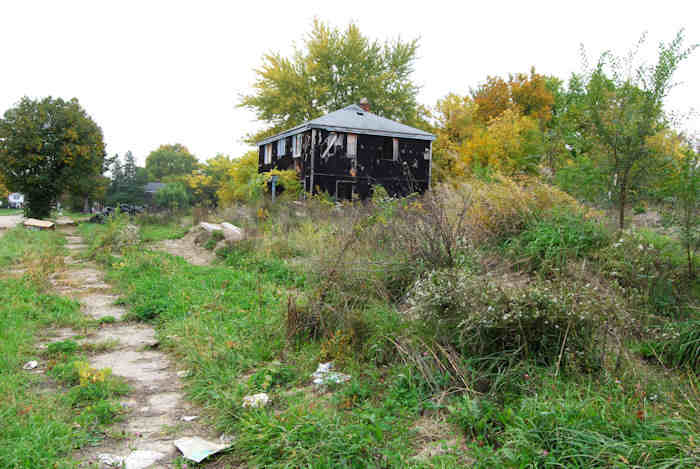 | ||
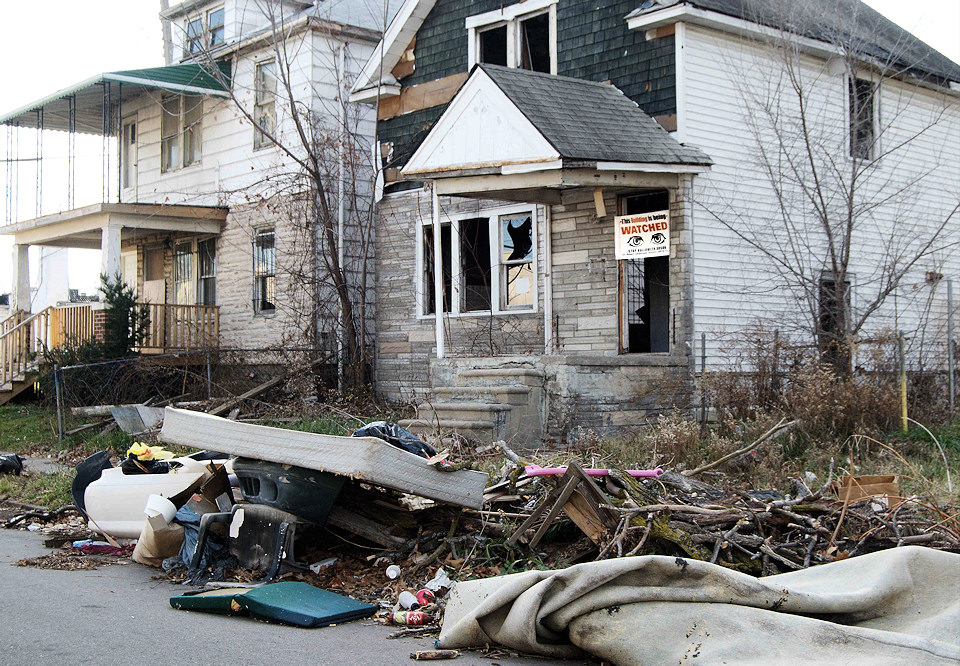 | ||
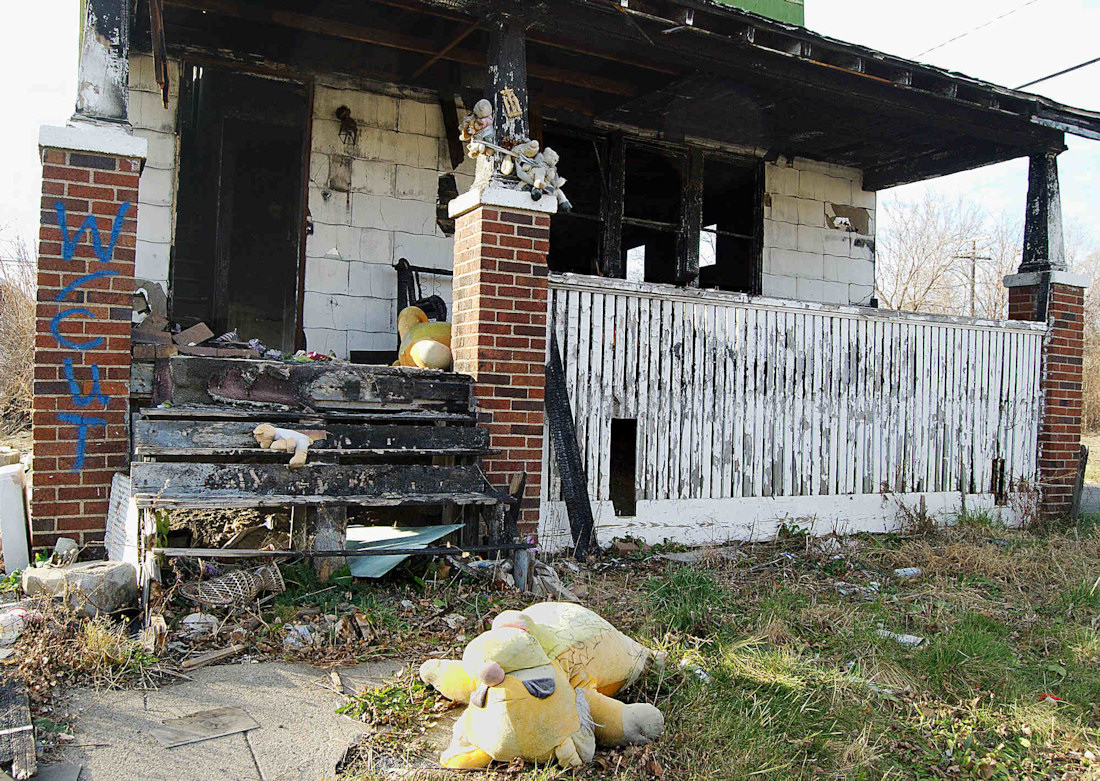 | ||
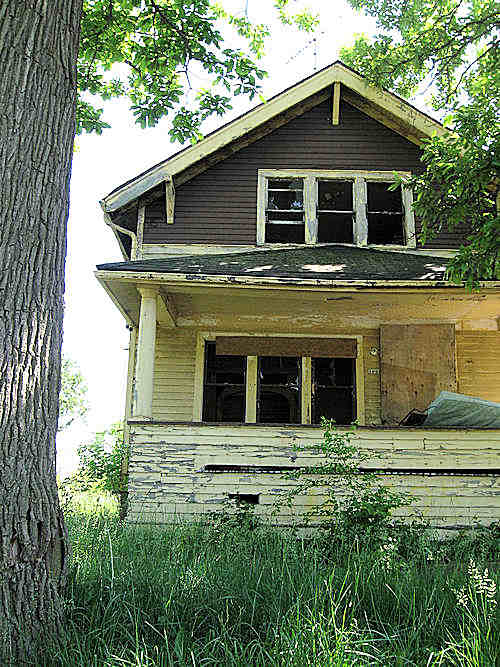 | ||
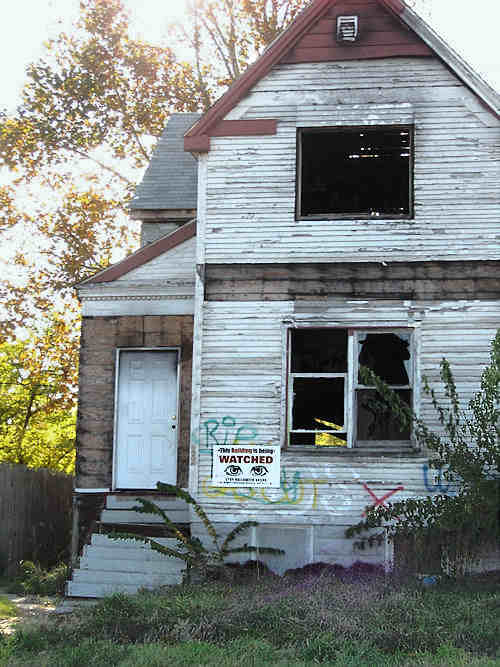 | ||
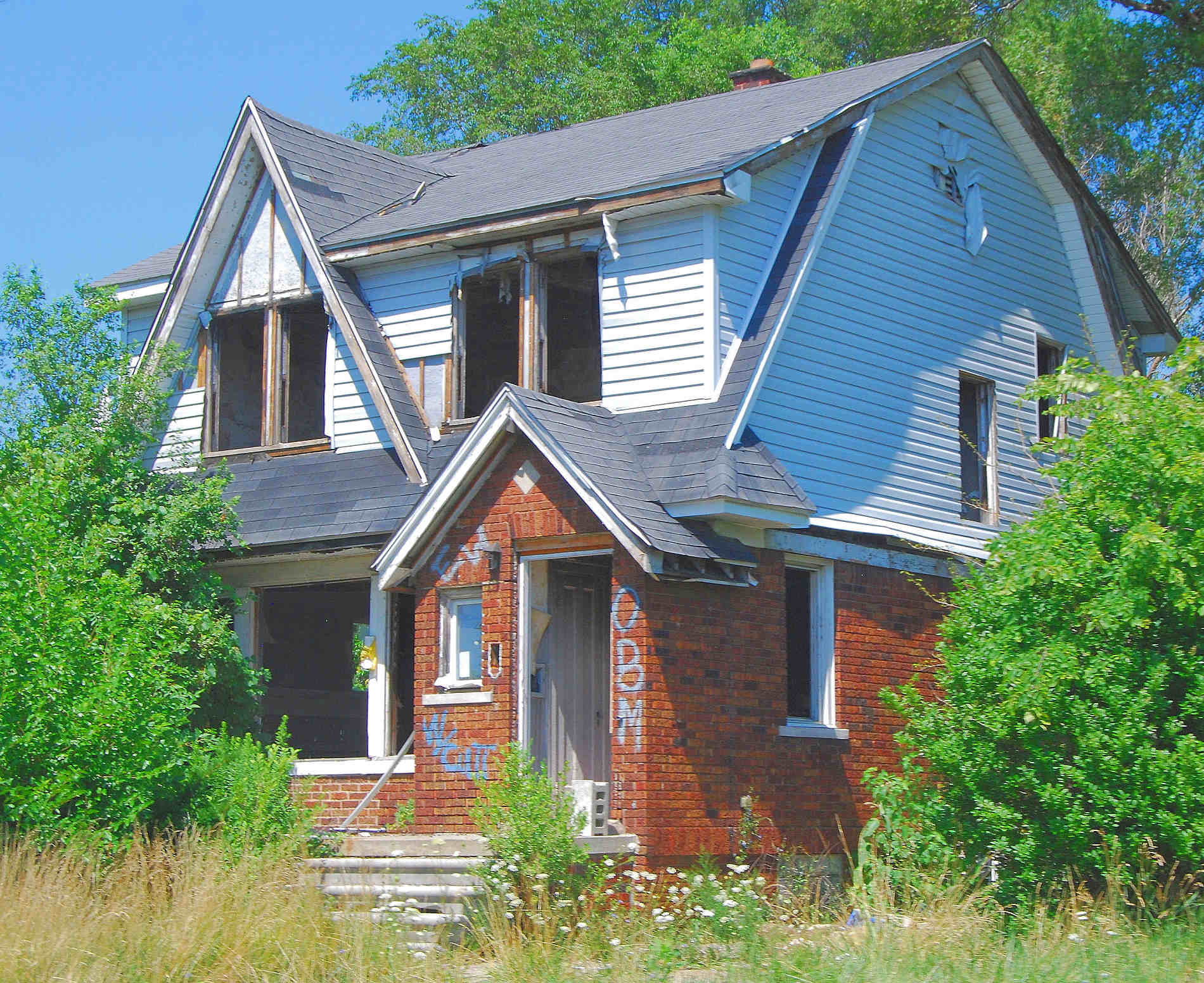 | ||
| -- | 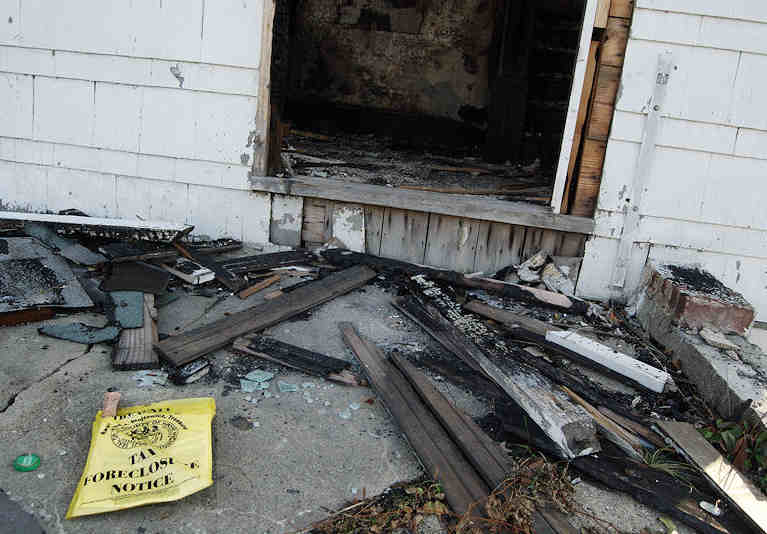 |
 WANT MORE?
WANT MORE?
See my album of over over 300 photos of abandoned houses on Flickr.
|
By Theresa Welsh It's July, 1967 and my wedding party was a riot. And How a Once-Bustling Neighborhood Turned into Empty Countryside thousands of abandoned homes throughout the city Abandoned Packard Plant Abandoned Fisher Body Plant Detroit Discards Become Unique Urban Art
BOOKS ABOUT DETROIT
|
Detroit's Spectacular Ruin:
The Packard Motor Car Company built luxury vehicles that set the standard for excellence in styling and engineering in the early 20th century. The huge complex of Albert Kahn-designed buildings was a fixture on East Grand Boulevard, employing as many as 40,000 workers. Its 3.5 million square feet inside the city of Detroit encompasses numerous structures. Packard cars were built here until 1956 when the site was repurposed, but it gradually became vacant, the beginning of a new life as an iconic and most-visited urban ruin. eBook for Kindle and Other eReaders Only $6.95 BUY FROM: |
|||||||||||||||||||||
|
BOOKS ABOUT DETROIT Click on a book image below to go to amazon.com for more information. | |||||||||
 |
 |
 |
 |
 |
 |
 |
 |
 |
 |
The Seeker Books Home Page More Detroit photos at 